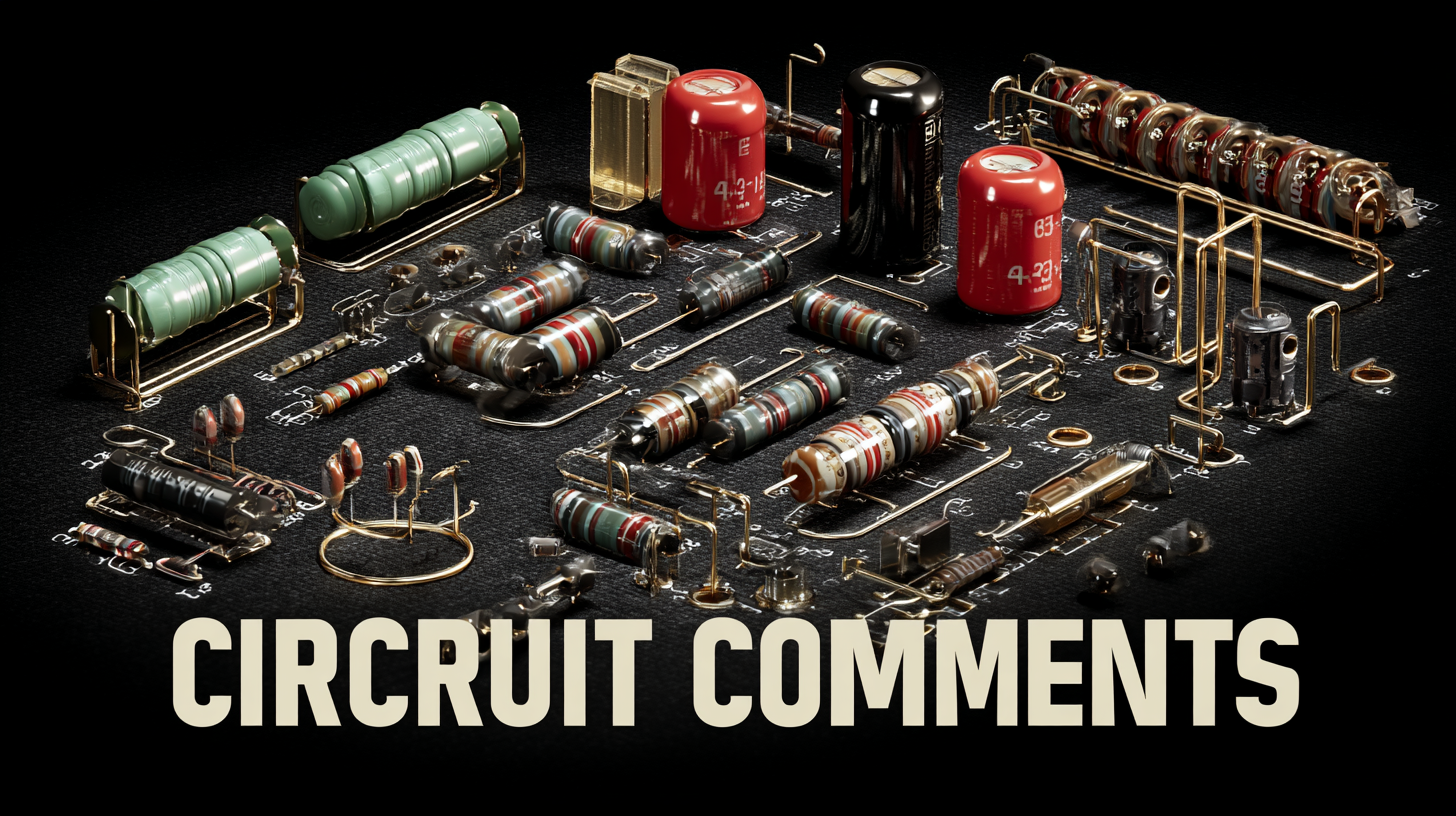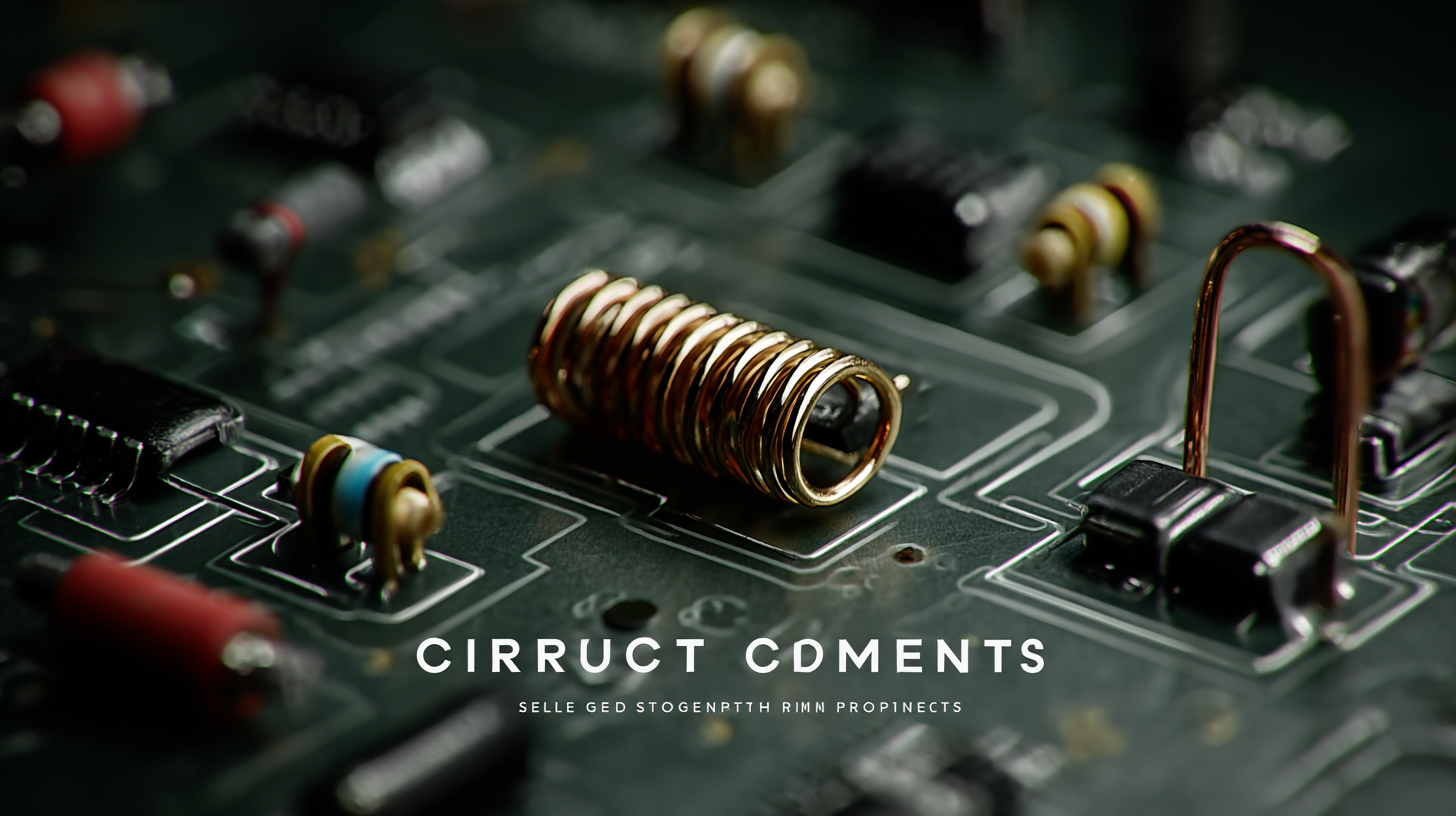Leave Your Message
In the rapidly evolving field of electronics, selecting the right circuit components is crucial to the success of any project. With the global electronic components market projected to reach $1 trillion by 2025, understanding the nuances of each component can significantly impact performance and reliability. According to a recent report by the Semiconductor Industry Association, the demand for advanced circuit components, such as resistors, capacitors, and microcontrollers, is expected to grow exponentially as industries increasingly adopt IoT and smart technologies. This guide aims to provide a comprehensive checklist for choosing the best circuit components tailored to your specific needs, ensuring that your projects not only meet technical specifications but also optimize efficiency and longevity.

When embarking on an electronic project, the quality of circuit components plays a pivotal role in determining overall performance. According to a report by the Electronics Components Industry Association (ECIA), approximately 30% of industry failures can be attributed to the use of substandard components. This statistic highlights the critical importance of investing in high-quality parts, as inferior components can lead to reduced efficiency, increased failure rates, and even potential hazards.
Furthermore, a study by the Institute of Electrical and Electronics Engineers (IEEE) found that products utilizing premium quality components experience 50% fewer defects over their lifecycle compared to those built with lower-grade alternatives. This significant reduction in defects not only improves reliability but also enhances customer satisfaction and brand reputation. By prioritizing quality in circuit components, engineers can ensure that their projects are built to last, ultimately saving time and resources that would otherwise be spent on repairs and replacements.
This bar chart illustrates the impact of different circuit components on overall project reliability.
When it comes to selecting circuit components for your electronic projects, understanding the different types available is crucial. According to the latest report by Allied Market Research, the global electronics components market is projected to reach $1,000 billion by 2027, driven by innovations in consumer electronics and automotive sectors. This indicates a rapid evolution in component technology, which will significantly affect your selection process. Key components such as resistors, capacitors, and semiconductors each serve unique purposes; resistors manage electrical flow, capacitors store energy, and semiconductors enable control through their intrinsic properties.

Furthermore, when evaluating circuit components, it’s essential to consider performance characteristics that can impact your project’s outcome. A study published in the IEEE Transactions on Components, Packaging, and Manufacturing Technology found that advanced semiconductor materials can yield efficiencies upwards of 90%, making them a popular choice for energy-sensitive applications. Additionally, component reliability is paramount; the same study noted that the rate of component failure can vary widely, with passive components generally exhibiting less than 1% failure over time, while active components may have rates exceeding 5%. Understanding these metrics will help you make informed decisions tailored to the specific requirements of your designs.
The landscape of the electronics industry is undergoing a significant transformation, driven in part by advancements in Chinese manufacturing. Recent reports indicate that innovations in technology and manufacturing processes in China have positioned the country as a leading force in advanced industries. This shift is fueled by a new industrial equipment upgrading action plan announced by the Chinese government, aiming to propel technological innovation and economic growth. Such initiatives are paving the way for high-quality circuit components that are crucial for various electronic projects.

As Chinese manufacturers elevate their standards, the global electronics landscape is experiencing structural changes. The rise of strong growth within the electronic manufacturing services (EMS) sector is underscored by supportive policies and the increasing demand for sophisticated components. According to industry insights, valued at over $178.52 billion in 2024, the global folding cartons market is projected to exceed $288.02 billion by 2033. This mirrors the growing significance of high-quality components in achieving efficiency and sustainability in production. Consequently, for project designers and engineers, understanding the role of Chinese manufacturing is essential in selecting the best circuit components that meet their project's demands while benefiting from the advancements in the industry.
When sourcing high-quality circuit components for your projects, it’s essential to keep a few key factors in mind to ensure reliability and performance. First, always verify the manufacturer’s reputation. Researching reviews and feedback from other engineers and hobbyists can provide insights into the reliability of a brand. High-quality components from reputable manufacturers often come with detailed specifications and rigorous testing processes, which are crucial for the effectiveness of your circuit.
Another tip is to check for certification marks such as ISO or RoHS compliance. These certifications indicate that the components meet specific industry standards for quality and environmental friendliness. This is particularly important when working on projects that require precision, as substandard components can lead to failure and costly repairs.
Additionally, consider sourcing components from authorized distributors to mitigate the risk of counterfeit products. Authorized distributors are more likely to provide genuine parts, complete with the necessary documentation. Taking the time to select the right components can significantly enhance the durability and functionality of your electronic projects.
The demand for circuit components is at an all-time high, influenced by global trends in technology and sustainability. The 2025 Manufacturing Industry Outlook suggests that manufacturers are investing heavily in digital infrastructures to foster innovation and address the skill gaps in the workforce. This digital transformation is critical for circuit projects, as the integration of advanced analytics and automation can significantly enhance efficiency and product quality. As the renewable energy sector expands, so does the need for reliable circuit components to support technologies in energy storage and hydrogen systems, which are projected to transform the global energy landscape.
Tip: When selecting circuit components, prioritize suppliers who emphasize sustainability and digital integration in their manufacturing processes. This not only contributes to the functionality of your project but also aligns with global trends toward environmental responsibility.
Moreover, the rising trend in semiconductor technology highlights the importance of staying updated on the latest advancements. In 2025, the demand for electronic devices and data transmission networks is expected to surge, which requires highly efficient and innovative circuit designs. According to recent studies, the integration of renewable energy sources into existing infrastructure will depend heavily on the performance of these components.
Tip: Ensure that the components you choose are compatible with the latest innovations in semiconductor technology to future-proof your projects and enhance their resilience against evolving industry demands.
| Component Type | Demand Trend 2023 | Key Applications | Average Price (USD) | Supply Chain Status |
|---|---|---|---|---|
| Resistors | Stable | Consumer Electronics, Automotive | 0.05 - 0.20 | Normal |
| Capacitors | Growing | Power Supplies, RF Applications | 0.10 - 1.50 | Tightening |
| Inductors | Increasing | Switching Regulators, Filter Circuits | 0.30 - 3.00 | Stable |
| Diodes | Demanding | Rectification, Signal Switching | 0.10 - 0.80 | Normal |
| Transistors | Increasing | Amplification, Switching | 0.20 - 2.00 | Tightening |
